« Darwin Awards | Main | Keeping God in? »
May 14, 2006
Chepstow Castle
Exploring the British Isles you sometimes wonder what people actually did during the 11th and 12th century apart from building castles and cathedrals. Quite a large number of these buildings seem to have been begun around that time and then added on over the centuries. A fine example is Chepstow Castle situated at the river Wye and guarding the Southern entrance into Wales.
Nowadays it is only a ruin but an impressive one. In 1067, a year after the Battle of Hastings, William fitz Osbern, Earl of Hereford, began the earliest defences at Chepstow. The castle is built on a cliff which effectively protects its Northern side. To the East, West, and South fortifications were added over the years. In the end the castle consisted of three Baileys and strong walls and fortifications on the southern side. These southern walls, however, could not withstand heavy cannon fire during the Civil War. In the end the Castle was taken by the Parliamentary troops and granted to Oliver Cromwell.
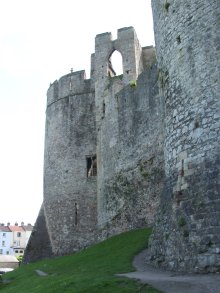
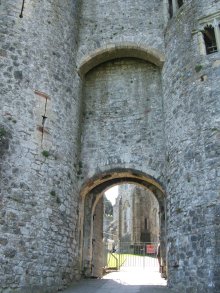
Marten's Tower to the left and the impressive fortified Main Gatehouse to the right
Nowadays the castle is entered through the Main Gatehouse which leads into the Lower Bailey. Around the Lower Bailey the living quarters of the last inhabitants of the castle are built. Marten's Tower must have made quite a nice house to live in with spacious rooms, a fascinating little chapel and quite a view from the windows in the upper stories. It is named, though, after the regicide, Henry Marten, who was imprisoned in the tower.
The Lower Bailey is separated from the Middle Bailey by the East Curtain wall which contains two towers. The next photo, which shows the wall between Lower and Middle Bailey, also shows how effective the cliff must have been in defending the castle. Supplies could be easily brought to the castle by boat but entry was impossible from the waterside.
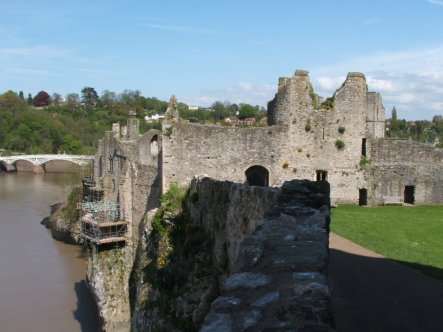
View from the Middle Bailey along the cliff onto the curtain wall between Lower and Middle Bailey
Between the Middle and the Upper Bailey the Great Tower, the oldest building of the castle, is situated.
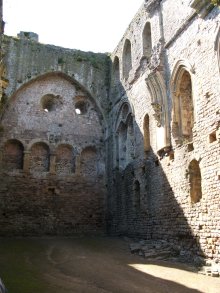
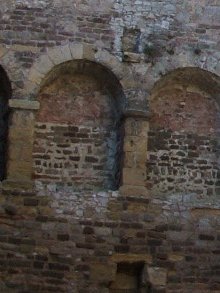
Westen wall of the Great Tower
Originally the Great Tower comprised a basement and a single large room above. Part of the Norman arcade of niches can still be seen on the west wall. A second floor and new windows were added by the sons of William Marshal, who gained Chespstow by marriage in 1189, and completed by Roger Bigod, fifth earl of Norfolk, who inherited Chepstow in 1270. The single large room must have been quite a stately one, well befitting the importance of the masters of Chepstow Castle. A closer look at the niches of the western wall even reveals remains of the eleventh century wall painting.
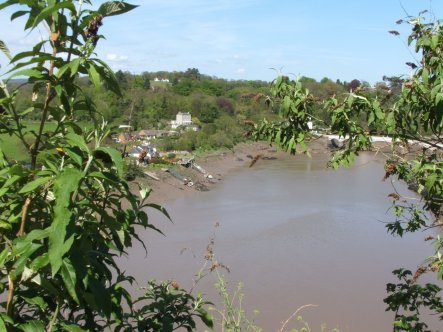
View from the Upper Bailey onto the muddy river Wye at low tide
The view onto the river is spectacular, at least in bright sunshine. Might be quite different in the usual Welsh drizzle, of course. However, the remains of Chepstow Castle are well worth a visit. Standing inside the Bailey and looking at the walls makes you suddenly realise how long they have actually been there: since 1100. That is almost a millennium ago. America wasn't even discovered then and the world must have been altogether a much smaller place. On the other hand – probably not - because travelling from A to B certainly took up a lot more time than it does nowadays.
Posted by Mausi at May 14, 2006 03:42 PM
Trackback Pings
TrackBack URL for this entry:
http://mt3.mu.nu/mt/mt-tb.cgi/4265